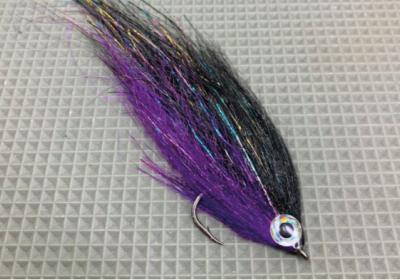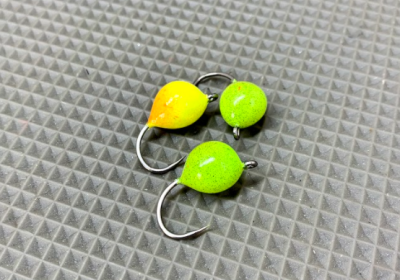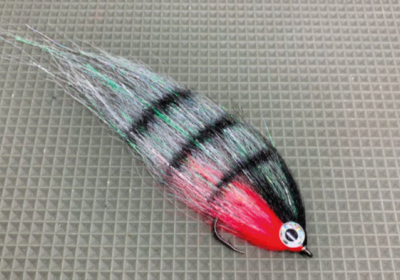Fishing & Gear
Pirarucú is located within the Mamirauá Reserve, about 600 km west of Manaus, a complex of lakes and channels between the Solimões River and Japura River. Mamirauá was the first Sustainable Development Reserve in Brazil, legislated by the Government of Amazonas in 1996, and remains the largest arapaima reserve in theworld. The purpose of a Sustainable Development Reserve is to find a balance between biodiversity conservation and the sustainable development of an area inhabited by human populations. Mamirauá covers an area of 1,124,000 hectares and passes through the municipalities of Uarini, Fonte Boa and Maraã. Other important Amazonian municipalities are also located in its area of influence, such as Jutaí, Alvarães and Tefé, the region's primary urban center and an hour and a half boat ride from Pirarucú.Anglers exploring Pirarucú will fish both the inland lakes system, formed in the rainy season from January through June when high water floods the inland jungle areas, and when the waters drop during the dry season, the system of channels that remain to connect them all to the main river.
Fishing Season
The season at Pirarucú runs from early September to the end of November. The dry season in this part of the Amazon runs from July through January, so this season straddles the middle of the dry season when water should be low and fish congregating in the lakes and channels.
Rainy season in the southeastern Amazon begins in late November/early December and the rivers reach their highest levels in March. After the rainy season ends, water clarity improves and river levels start to drop. Millions of fish begin their migration upstream to find food (trophics migration) in the most oxygenated waters on granite base, riffles and rapids. Predatory fish follow this migration and the pulse of life comes back to the headwater system. The dry season is characterized by hot and breezy days, cool nights and very few mosquitoes and blackflies. This is a pleasant time of year that the Kayapó refer to simply as “nice”. In contrast, the rainy season is characterized by torrential rain, the inundation of rivers and creeks and annoying clouds of biting insects.
CATCH & RELEASE RULES
All fish caught should be released without exception and please avoid unnecessary handling of the fish. Single hooks are mandatory. Handling these fish requires precaution, not only to avoid hurting them but also to prevent injuries to you. Follow your fishing guide's instructions.
6-8 weight single-handed rods are good to have for the Arowana (and if around, the Tambaqui and Peacock Bass). For Arapaima, bigger rods in the 10 to 12 weight range are best as these fish can range from 100-400 pounds. It is best to have at least three rods rigged with different lines and/or flies in the boat, one set up for arapaima and one or more for the other species. We recommend having one 6-8wt rod with a floating line for the Arowana, Peacock Bass and Tambaqui one 9-10 weight rod for the smaller Arapaima with intermediate line and a 12 weight rod for the Giant Arapaima rigged with a 400-600g sinking line. Please plan on bringing an extra backup rod. Powerful rods with a strong butt section are recommended.
Our recommendations are Thomas & Thomas Rods - Exocett SS250 to 450 and Excocett Predator, these models excel in the jungle in many aspects from big streamers with sinking lines or poppers/wind resistance flies.
As with rods, reels that have been designed for saltwater fly-fishing are the best choice. These jungle fish will test your stripping fingers more than your reel, but in the event you can get them on the reel before they get into the wood, reels with strong smooth drags arerecommended. Bring a trusted reel that you feel comfortable with. Weight of the reel is important also since you will be casting a lot. 30-pound backing is required.
We recommend the Silver King reels from Nautilus.
Most of the Arapaima fishing is done dredging the depths, so sinking lines are a must, such as a fast sinking sink-tip 24-foot 400 to 600 grain. We strongly suggest you bring at least two back up fly lines, as the Piranhas on occasion will bite your line while stripping in or fighting a fish. For the floating and intermediate lines, weight forward lines designed specifically for the tropics and saltwater are what you want. Scientific Anglers Titan Taper or comparable, ultra-aggressive, warm water fly lines hands-down work the best. Another amazing line is the Scientific Anglers Jungle Taper in clear intermediate tip line. Full floating Scientific Anglers Jungler Taper are excellent for effortlessly throwing giant wind resistant poppers and baitfish streamers. Do not bring cold water floating lines, as the hot weather makes these lines soft and gummy. Important Note. For the giant Arapaima Bring 80lbs+ core resistant fly lines.
The Scientific Anglers Titan Tapers are the best choices. For the Arowana and Peacocks bring a warm water floating 6-8wt line, good for throwing large dry flies and small baitfish. The Scientific Anglers Jungle Taper and Grand Slam Taper are great options
Arapaima:
Scientific Anglers Absolute Fluorocarbon 80-100 lbs – leaders will be 5-7’ long straight with no butt section or tippet. For the smaller Arapaima bring spools of 30, 40 # fluorocarbon also tied straight leaders of 5-7’ in length.
Arawana, Peacock Bass & Tambaqui:
Require longer 8-9- foot leaders tapering down to 12-20#.
All Arapaima:
Fishing is done using baitfish patterns of all various weights and lengths. There is a new world here to discover. For baitfish imitations, streamers in white/black head, solid black with flashtail, black/purple and black/red, really any combination of these colors are very effective.Large Arapaima, we need heavily dressed flies in lengths from 4 to 10 inches, with good action in the water, in barbless 6/0 to 8/0 (high quality hooks as Tiemco 600SP or the Onwer Aki) are required.
As for patterns, the most typical flies used are synthetic material streamers with a nice bunch of flash, specifically on the tail. However many baitfish imitations have proved to be very successful: Puglisi Streamers in medium to very big sizes, Deceivers and Half and Half’s. Imagine that arapaima can eat a baitfish from up to 10 inches!! So plan to have big streamers in clear colors mixing as white with red or black and also darker colors as black/red, black/orange and other combinations
Small Arapaima:
Same as above but tied on 3/0 to 6/0 hooks. Best to have the strongest and sharpest hooks available.
Arowana. Peacocks, Tambaqui:
Small/Medium Foam Poppers, Divers and Deer Hair Mice as well as Terrestrial Flies like Chernobyl Ants, Beatles and Cicadas are fun to fish. Small Baitfish Patterns as Puglisi Peanut Butter, Clouser Minnow and Lefty's Deceiver also works really well with Arowanas and Peacock Bass. It is a good idea to have a few fruit flies in case you get into a big school of Tambaqui.
Note: Flies are available for sale at the camp for $5 to $10 each, but be sure to show upwith a good selection as well. You needn't overload yourself with gear, but theseitems are regarded as essential
- Two Pair of Polarized Sunglasses (in case you lose or break a pair).
- Waterproof Sunscreen SPF 30+ (UVA) (UVB) (waterproof and unscented)
- Buff Face Mask, (light in color)
- Fishing Hat/Brim for Sun
- Fly Rods between 6 to 12 weight (no less than 3)
- Reels With Minimum 30 pound Dacron Backing
- Saltwater Outbound Fly Lines (extra lines for backup)
- Flies and Fly Box
- Long Sturdy Pliers (debarbing and hook removal)
- Hook Sharpener
- Leaders, Fluorocarbon Tippet and wire tippet
- Fishing Sun Protection Gloves
- Line clippers
- Light Weight Gore-Tex®
- Rain Jacket
- Light Weight Synthetic Fleece Top
- 4 Long Sleeve Fishing Shirts
- 1 Pair of Fast Drying Shorts or swimsuit
- 3 Pair of White Cotton Socks (for wearing on the boat deck while casting)
- Lightweight boat shoes
- Waterproof Camera, Memory Cards, Batteries and Charger
- Smart Phone or Tablet with Charger
- Flashlight/Headlamp
- Water Bottle & Dry Gatorade Mix or Emergen
- CPacketsLip Balm with sunscreen (highest SPF you can get)r
- Dry Bag, Day Pack, boat bag or Fanny Pack (100%Waterproof)
- Insect repellent and "anti-itch" cream
- Waterproof Bags or Zip-Loc Bags (to carry camera, other gear while in the boat)
- Passport with at least 6 months of validity Brazilian Tourist Visa
- 2 Copies of passport (***packed separately in zip-lock bag***)
- Airline tickets and itinerary
- Cash (Indian Fee, lodge gratuities, small bills for tip, gift shopping, etc.)
- Credit card (call company, inform of travel plans)
- Notebook and pen
- Emergency Telephone Numbers
- Toiletries (Toothbrush, toothpaste, hand lotion)
- Aspirin, other over-the-counter medications like antacids
- Prescription Medications (packed in your carry-on bag)
- Prescription Glasses
- Universal Electrical Adaptor






